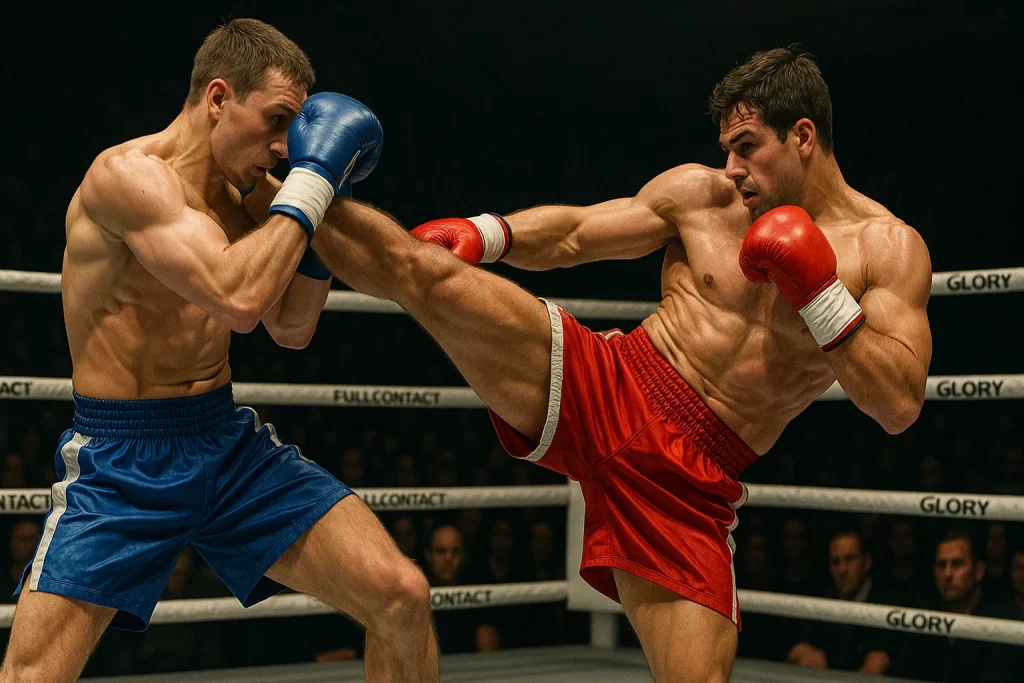Full-Contact

Full-Contact Kickboxing emerged in the United States in the 1970s as a response to point-based karate, blending traditional martial arts with Western ring competition. Unlike Muay Thai or low-kick styles, Full-Contact restricts attacks to above the waist, promoting high kicks, spinning techniques, and clean boxing combinations. It emphasizes continuous action, physical conditioning, and knockout finishes under clear rules. Though less prominent today, it laid the groundwork for modern sport karate and was an early bridge toward global kickboxing. Full-Contact remains a respected discipline for those seeking high-speed, technical stand-up fighting.
Full-Contact Essentials
About Full-Contact
Get to know what makes Full-Contact Kickboxing unique—a striking art that emphasizes speed, clean techniques, and power above the waist. This section introduces the key principles and rule structure that define the style.
Full-Contact History
Explore the rise of Full-Contact Kickboxing from its karate origins and televised bouts in the 1970s to its golden era under organizations like PKA and WAKO. Learn how it shaped modern competitive striking.
Philosophy & Approach
Full-Contact values precision, timing, and endurance over brute force. Discover how fighters are trained to control distance, maintain rhythm, and overwhelm opponents with speed and combinations.
Techniques & Style
Learn the signature techniques of Full-Contact—spinning back kicks, axe kicks, high roundhouses, and fast boxing flurries. This section breaks down the clean, above-the-waist rules that shape its style.
Traditions & Etiquette
Rooted in karate culture, Full-Contact retains formal respect practices, bowing rituals, and dojo decorum. Understand how tradition blends with sport in training and competition.
Uniform & Symbols
Explore the classic Full-Contact attire: karate-style gi pants, gloves, and sometimes foot protection. Learn how colors, patches, and emblems reflect affiliations and ranking.
Weapons
Full-Contact Kickboxing is a purely unarmed striking discipline. This section explains the absence of traditional weapons and the style’s focus on kick-punch combinations under strict rules.
Ranking System
Many Full-Contact systems retain colored belts or sashes from their karate lineage. Discover how ranks are earned and what they represent in training and competition.
Full-Contact Glossary
Master the terminology of Full-Contact—techniques, movement drills, and common competition terms. A practical reference for students and fans alike.
Notable Figures
Meet the pioneers of Full-Contact Kickboxing like Joe Lewis, Bill Wallace, and Don Wilson. This section celebrates the champions who brought the sport to the global stage.
Branches & Organizations
Learn about the key organizations that shaped Full-Contact, such as the PKA, WAKO, and ISKA. Understand how different branches enforce rules and support the competitive scene.
Competitive Format
Discover how Full-Contact matches are structured: ring size, round duration, scoring criteria, and legal techniques. Get insight into what makes these matches fast-paced and viewer-friendly.

